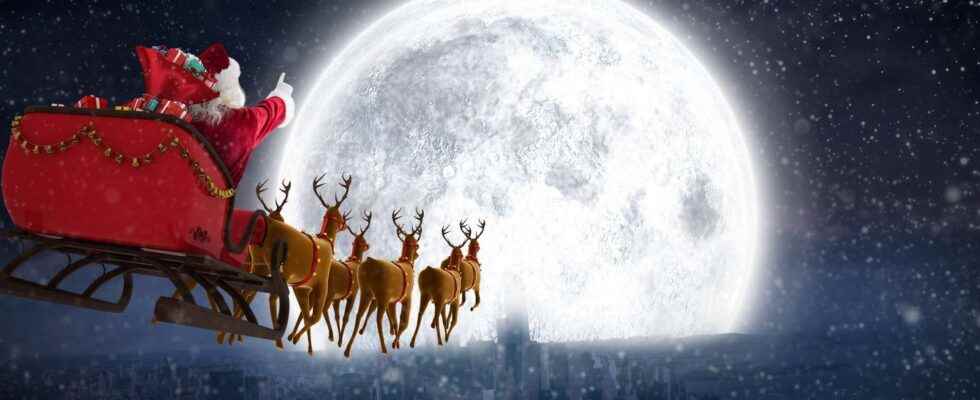On the night of December 24 to 25, he toured the world in record time to bring gifts to all good children. Santa. Today sweet and smiling, the character has a long history.
You will also be interested
[EN VIDÉO] The flying drone, a good assistant for a Christmas light painting Light painting is a photographic technique that consists of taking a photo in a long pause, while drawing with a source of light. The Ascending Technologies team did the same, but using specially programmed drones. Video demonstration.
In Europe, celebratearrival of winter around a meal and exchanging gifts is an ancestral pagan tradition. But only Middle ages, with the intervention of the Catholic Church, that appears around these festivities, the first character of legend: Saint-Nicolas. What we know for sure is that man really came into being in present-day Turkey around AD 270 and subsequently became a bishop. He is also credited with several miracles which earned him to be canonized.
In Northern and Eastern Europe – and even in certain regions of France – Saint-Nicolas, the “patron saint of schoolchildren” is always celebrated. The latter is in charge, immutably on December 6, to reward good children with treats and toys. His long white beard is somewhat reminiscent of that of the Santa Claus. But his coat, traditionally mauve, and the donkey on the back of which it moves, clash a little.
To get to the Santa Claus we know today, it took a few more steps. First, the Protestant reform of the XVIe century that put an end to the feast of St. Nicholas. Except in the Netherlands, which then transformed him into a semi-secular character: Sinter Klaas. When the Dutch emigrate to the United States, they take it with them in their suitcases.
The image of Santa Claus appears in the United States
On the other side of the Atlantic, the date for the distribution of gifts is gradually slipping towards December 25. It is a pastor named Clement Clarke Moore who transforms – in two texts published in 1821 and 1823 – Saint-Nicolas into a softer and smiling character, bordering on the debonair, and stripped of his episcopal attributes. . In the adventure, the one we then called Santa Claus also won a hat and reindeer to pull his sleigh filled with presents.
Finally, it is to the press illustrators, John Tenniel and Thomas Nast, that we owe the idea that we have today of the look of Santa Claus: a paunchy old man, dressed in a suit edged with white fur and held in place by a large leather belt. It was also Thomas Nast who established, in 1885, the main residence of Santa Claus in North Pole. Contrary to what those who deplore the mercantile turn of the Christmas party convey, Santa Claus does not owe his image to Coca-Cola. The soda brand has only relied on the fame of the old man to advertise it. Perhaps she just tipped the scales in the red. Because, at that time, Santa Claus still seemed to hesitate between red … and green.
In France, it is only at the end of the second World War that the character is really made popular in France by American soldiers. In 1946, the famous song Small Santa thus pays tribute to the children who lost their father in the war.
Interested in what you just read?
.
fs4
